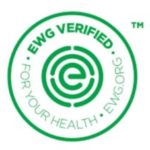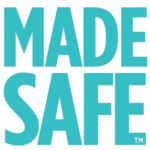For anyone who’s tried to navigate the green beauty world, it’s no secret that greenwashing is abound (aka false advertising, claiming something is cleaner, or greener than it is). As you may know by now, there are endless certifications for different types of ingredients (organic vs. conventional plant ingredients), cruelty free (free of animal testing), GMO-free etc. But there are a few tools that can help you focus on which products are formulated with safer ingredients.
These four tools can help you cut through the noise and find products that are formulated with safer ingredients.
1- Skin Deep Database & 2- EWG Verified
For the last decade, the Environmental Working Group (EWG) has been one of the leading organizations on cosmetics safety. They became a household name after they launched the Skin Deep Database, which is a very handy tool for those who want to learn how their ingredients stack up compared to other brands. The majority of personal care products are in this database, and you search by brand or ingredient. The Skin Deep Database is a first step in understanding the safety of a product, but please note it’s not always the complete picture. Some preservatives for example will rank high (4) in the database and will skew the product score higher. Many companies safely use the best (safer preservatives) on the market, and I generally look for products that are in the 0-3 range. And for those of you who are wondering if companies can pay to alter their ranking, the answer is a solid NO!
 EWG Verified is a new certification program for personal care brands, and brings their consumer tool—Skin Deep—to the next level. Products that have the EWG Verification can be identified by this logo, and searched for in their database. The products need to undero an extensive review of ingredient safety, how an ingredient is used (what level in particular), undisclosed fragrances are NOT allowed, including several other important health criteria. The certification is considered rigorous and you can rest easy knowing your product has been EWG Verified.
EWG Verified is a new certification program for personal care brands, and brings their consumer tool—Skin Deep—to the next level. Products that have the EWG Verification can be identified by this logo, and searched for in their database. The products need to undero an extensive review of ingredient safety, how an ingredient is used (what level in particular), undisclosed fragrances are NOT allowed, including several other important health criteria. The certification is considered rigorous and you can rest easy knowing your product has been EWG Verified.
3- The Never List™
Developed by the team at Beautycounter, The Never List™ is a a simple tool designed to help consumers avoid the most common 16 classes of toxic ingredients found in personal care products. This is a great first step to analyze what currently lurks in your products and was designed to simplify your life when you’re walking down the beauty aisle.
4- MADE SAFE
MADE SAFE is a non-profit organization and certification that extends beyond personal care products to include household cleaners, mattresses and more. The MADE SAFE certification combines an ingredient screen with product testing. Similarly, look for the list of MADE SAFE brands  so you can feel confident in your beauty purchases.
so you can feel confident in your beauty purchases.
There are several other tools/certifications out there that I briefly want to address:
Think Dirty is a mobile app that has a fun and well-designed user interface. Unfortunately however, the tool doesn’t properly weigh ingredients when assessing safety. For example, as I mentioned above, preservatives (which can range from safe to toxic) generally will have a higher “hazard profile” since they are designed to kill mold, yeast and bacteria. In the Think Dirty formulation, if any product contains a higher ranking preservative (or even natural citrus oils which can irritate skin in high quantities), it skews the final score of the product, making it seem more dangerous than it is. Context is important when trying to understand safety.
It’s well known by the scientific community that some of the safer preservatives can be used in a manner that won’t impact human health (for example at less than 1% of the product). While I appreciate the intent behind the app, I don’t think it’s living up to its goal. And for these reasons I do not believe the Think Dirty tool is an accurate or useful tool for consumers to understand which products are safer than others.
GMO-free is great when you’re looking for food, but it doesn’t mean as much when it comes to your skin care. There is much debate about potential health impacts of genetically modified plants, but most of the data lies around the environmental impacts. I look for skin care brands that aim to source commonly genetically modified ingredients (like soy or corn) GMO-free to cut down on pesticide use. It’s also important to note that ingesting GMOs is very different than dermal exposure, routes of exposure matter greatly in science and should be considered when you’re finding what’s “safe” for you and your family.
To make things more complicated, sometimes the GMO ingredient used in a beauty product is safer than common toxic chemicals used. Given how little we know about the health impacts of GMOs used in a dermal application, I would rather have dermal exposure to a GMO ingredient than a product that contains a known toxic chemical. So if your beauty product says it’s GMO-free, wonderful! But it’s not the full picture of a if a product is actually safe to use.
This topic is complicated, but hopefully this breakdown was useful. Please feel free to share this important information with those that you love most.
Join my mailing list and never miss a post.



